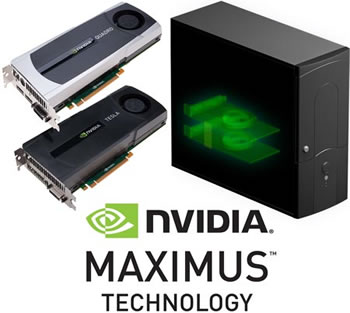Nvidia has launched a new hybrid processing technology that should make it easier for professionals to use the company's graphics and compute products in the same machine. First unveiled during a press event at SIGGRAPH 2011 in August, the company's "Maximus" technology works similarly to consumer graphics switching software called Optimus. However, instead of allocating resources between two graphics processors (generally an integrated and discrete solution), Maximus offers the hybridization of Nvidia's Quadro GPU and Tesla GPGPU products.
The Quadro series is more geared toward displaying graphics such as computer-aided design, whereas Tesla is best suited for raw compute tasks. Systems outfitted with both products can use Maximus to intelligently distribute loads as necessary. In the video demonstration below, Nvidia shows how professionals might use the Tesla card to render a project while the Quadro allows them to continue working. While the Quadro can technically perform both functions, the rendering process usually consumes too many resources to do anything else.
What's more, Maximus allows users to harness the additional computing power by dedicating both cards to the same workload. For instance, Nvidia claims a project that would previously take eight hours to complete could be finished in only an hour by combining the Quadro and Telsa. Maximus is either already supported by or will soon be supported by a broad array of professional software, including Adobe, Ansys, Autodesk, Bunkspeed, CAD, Dassault Systemes, DCC and Mathworks. Maximus-powered machines will be offered through HP, Dell and others.
